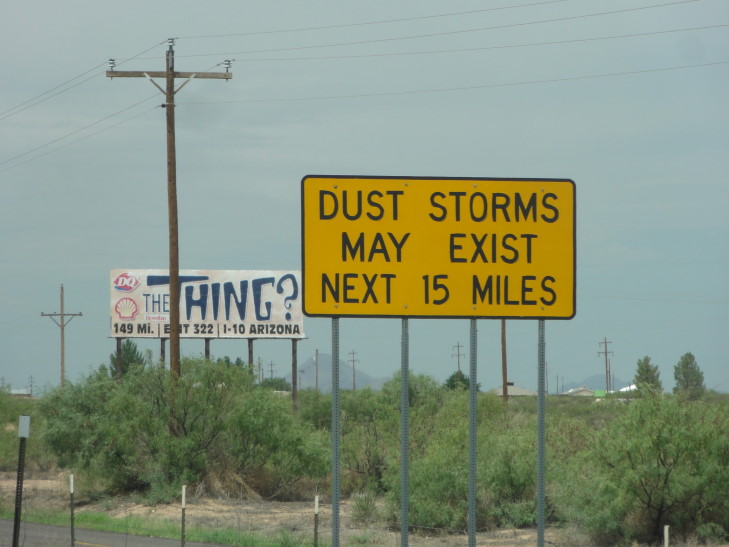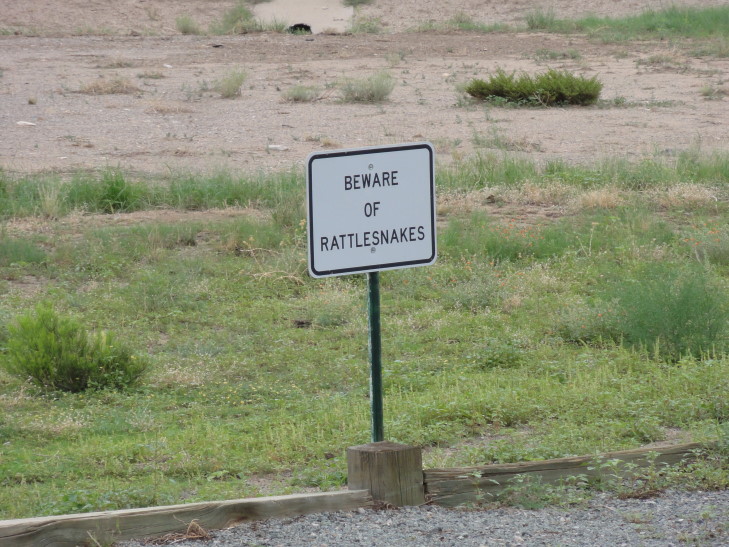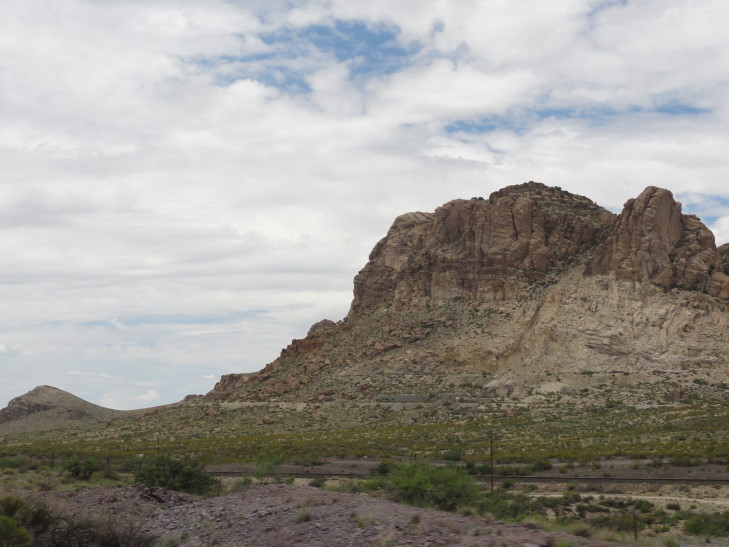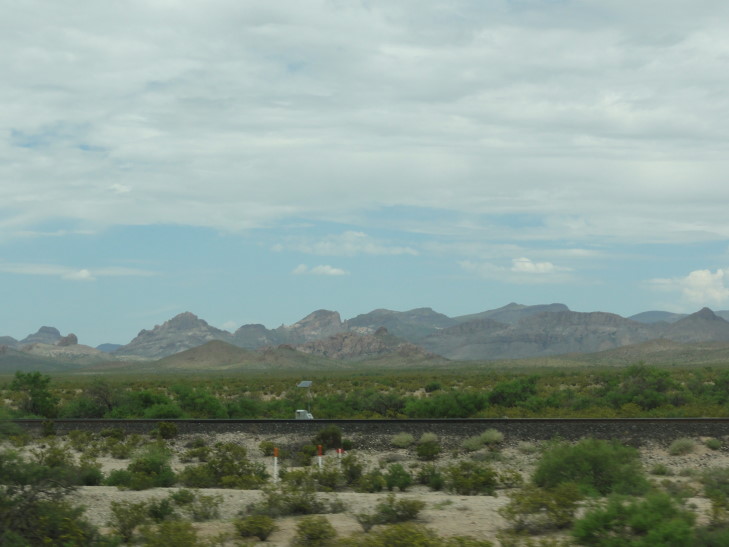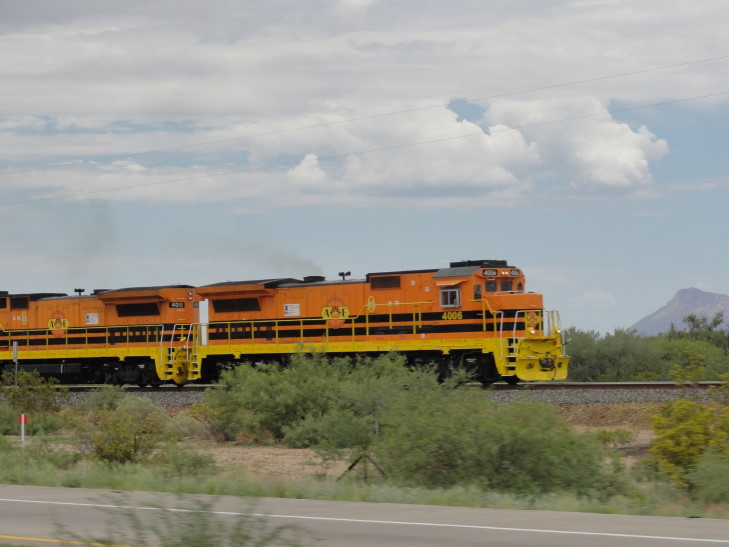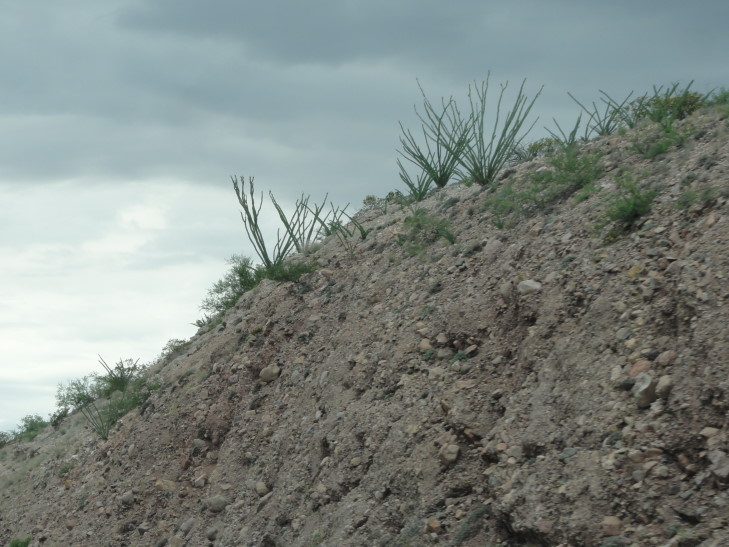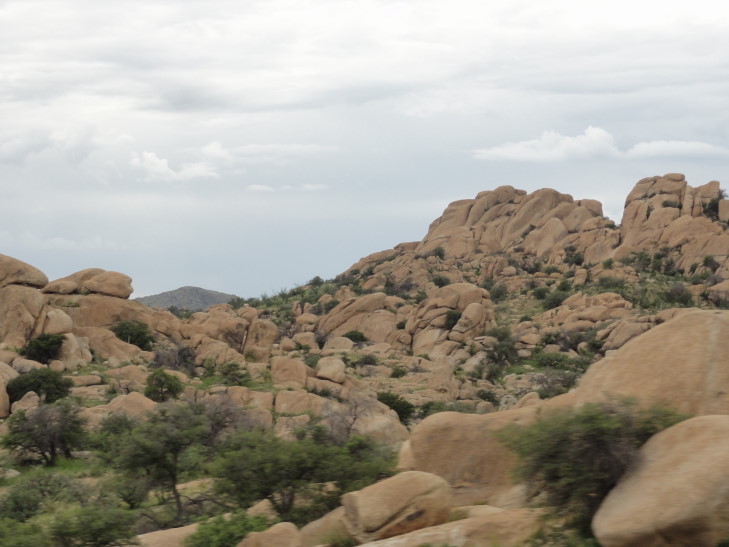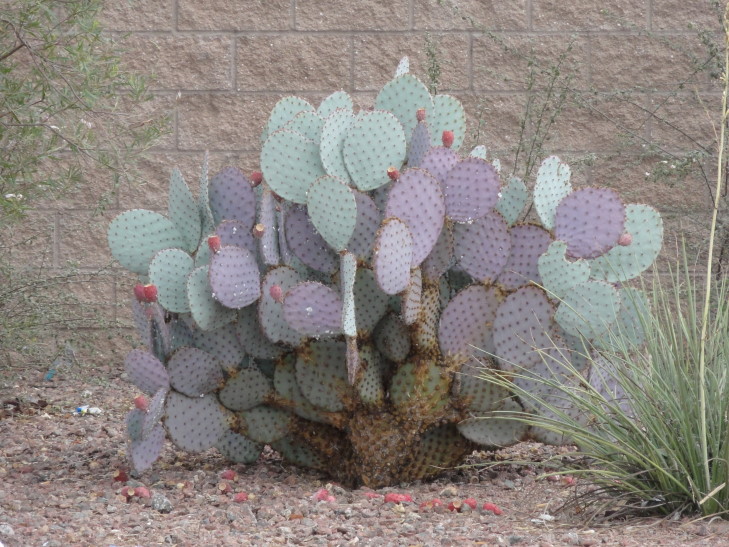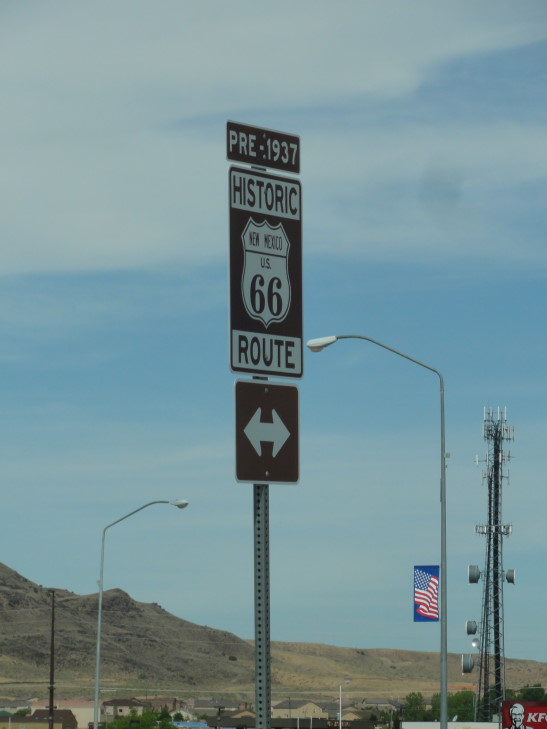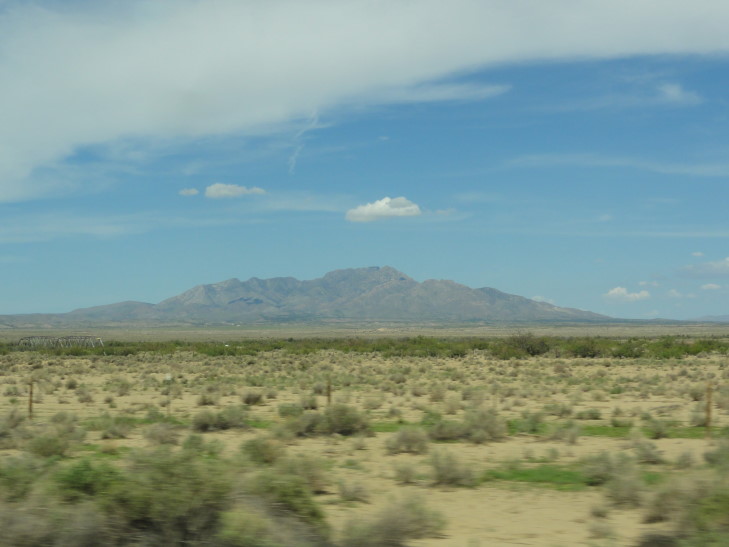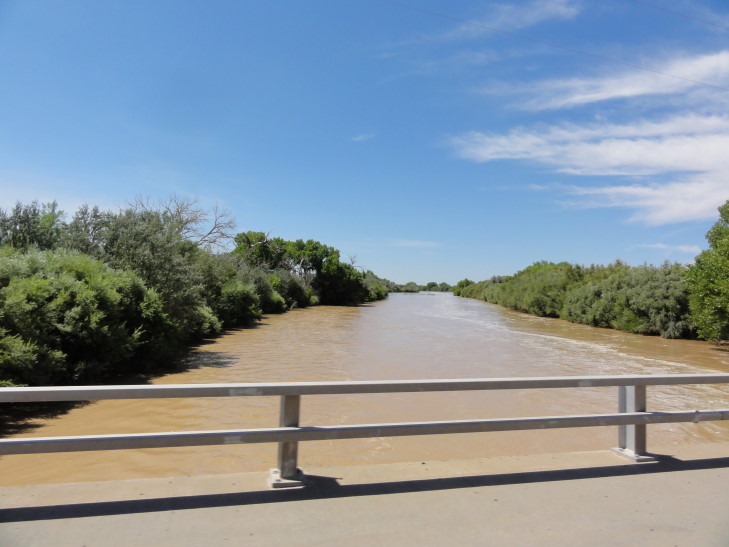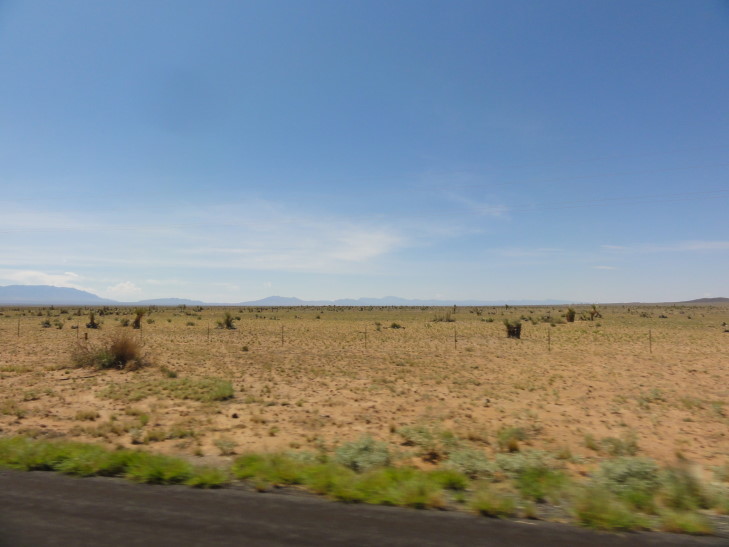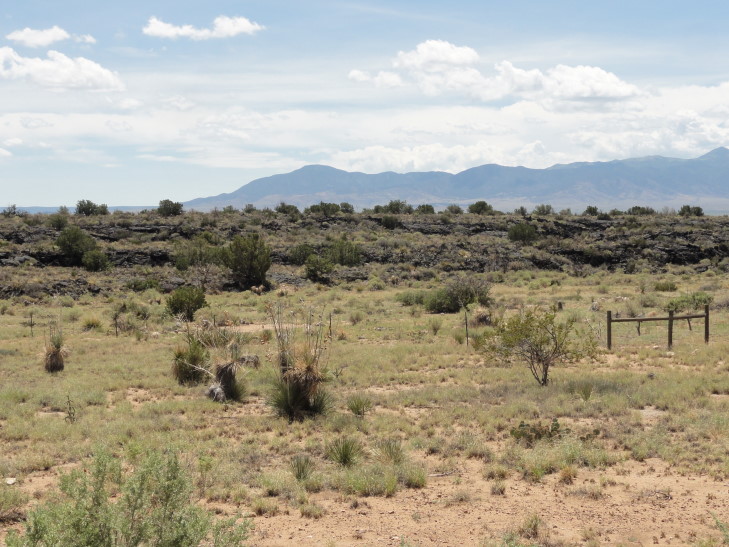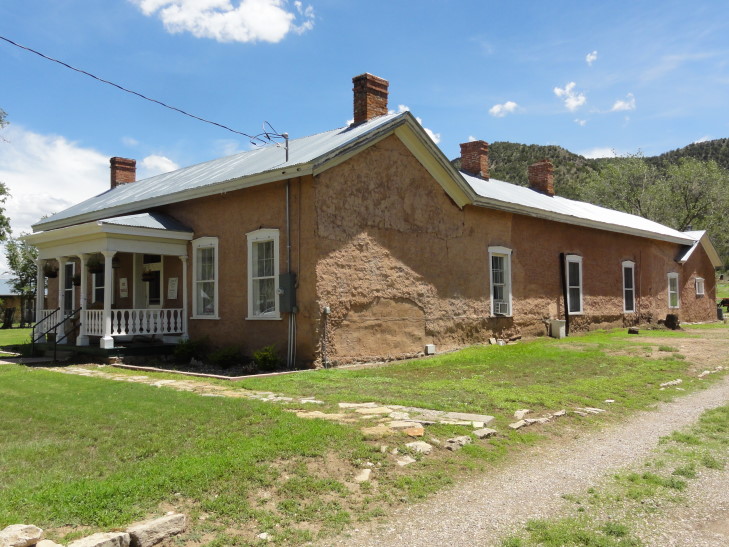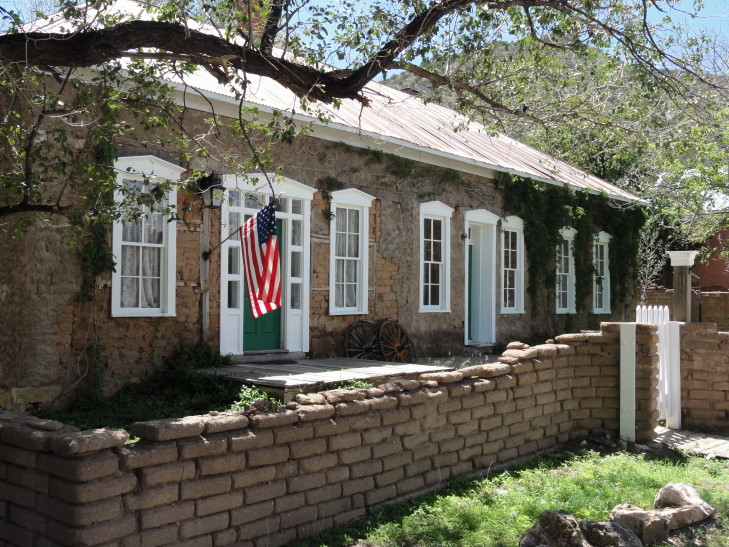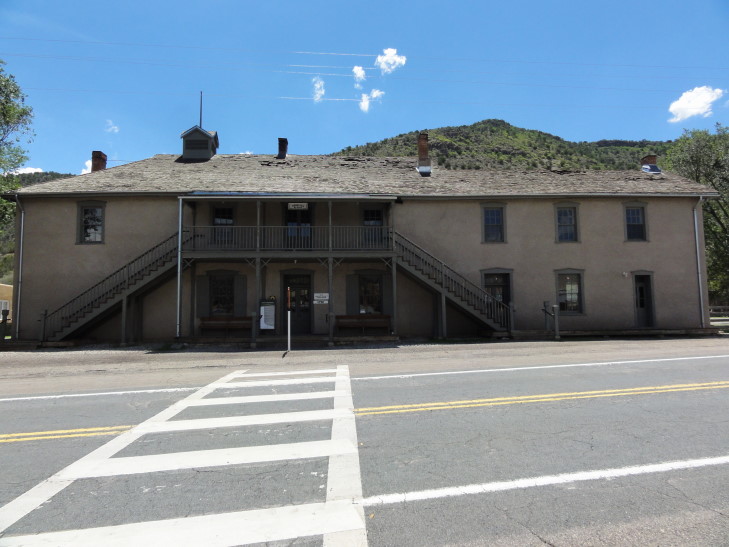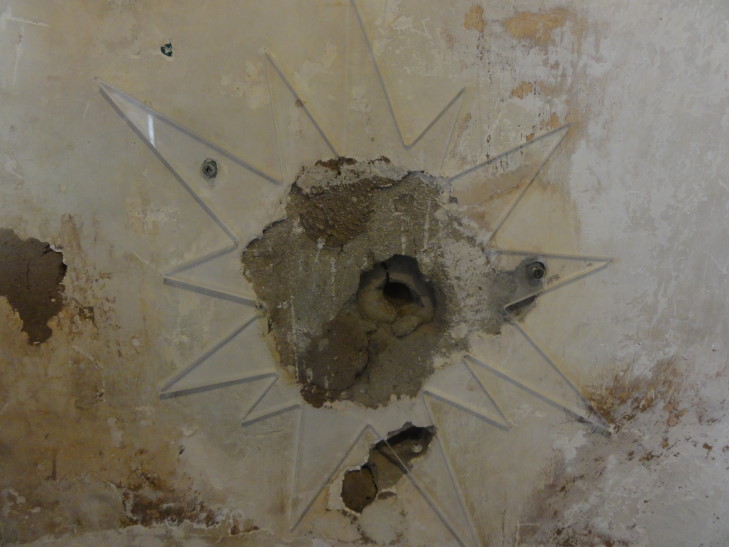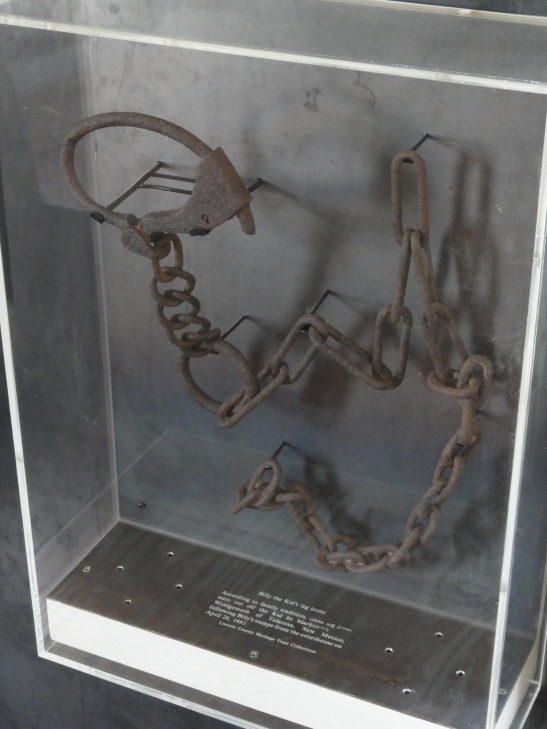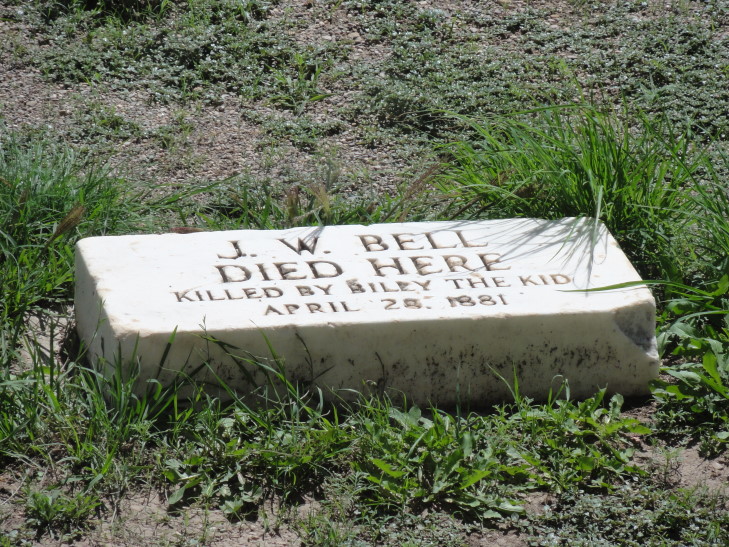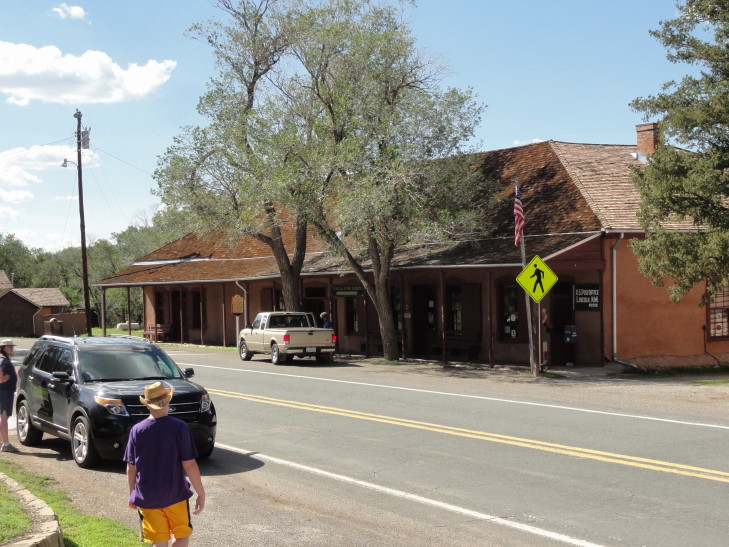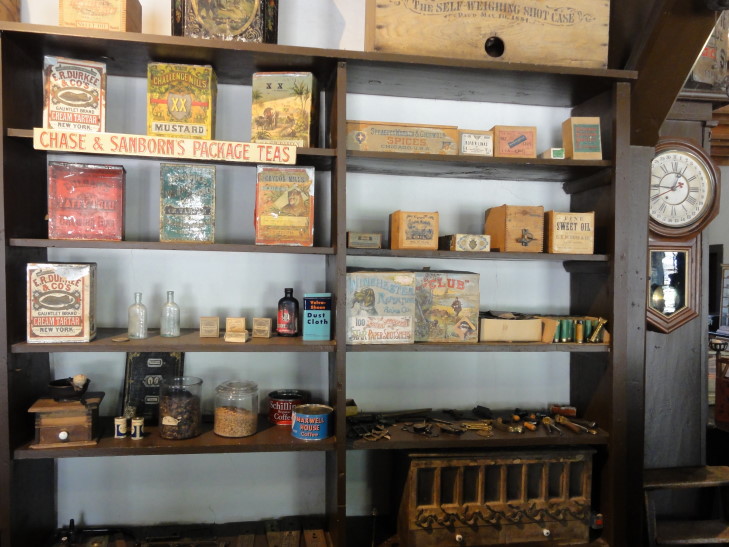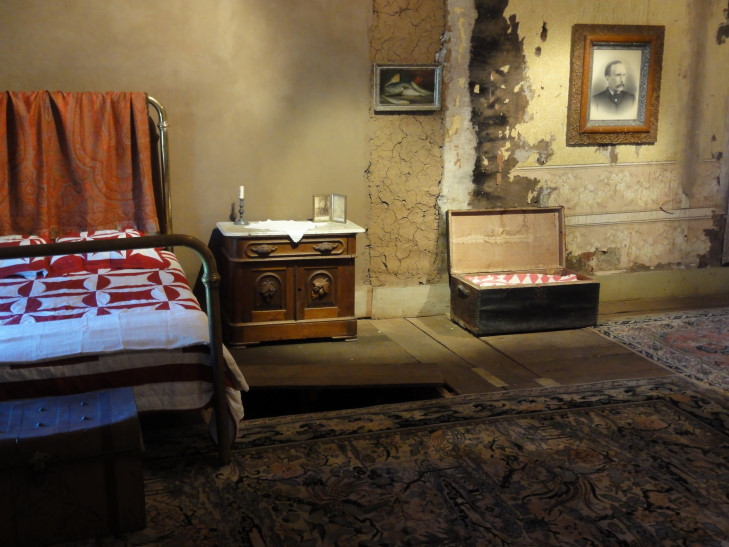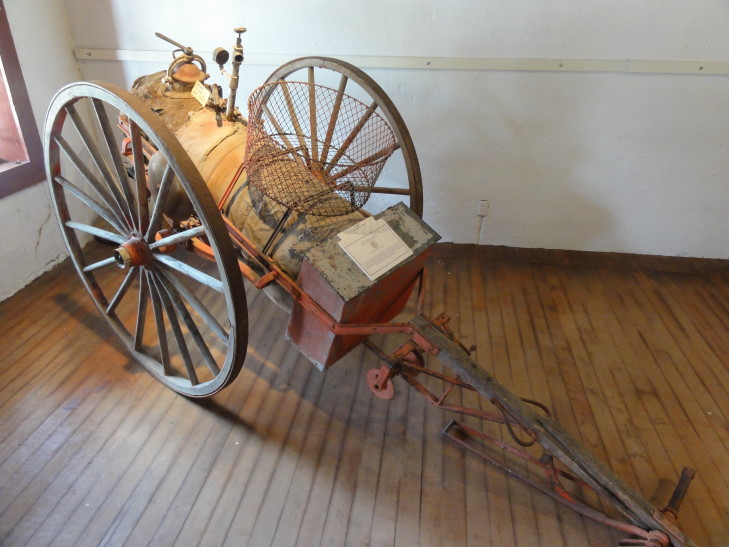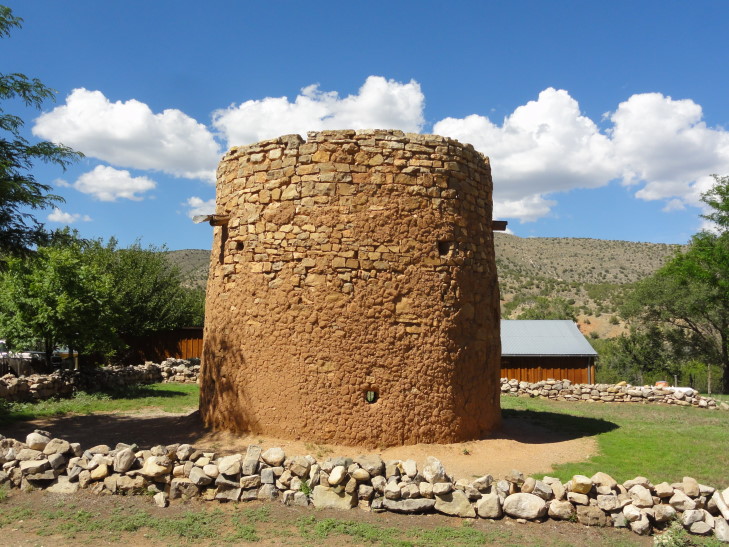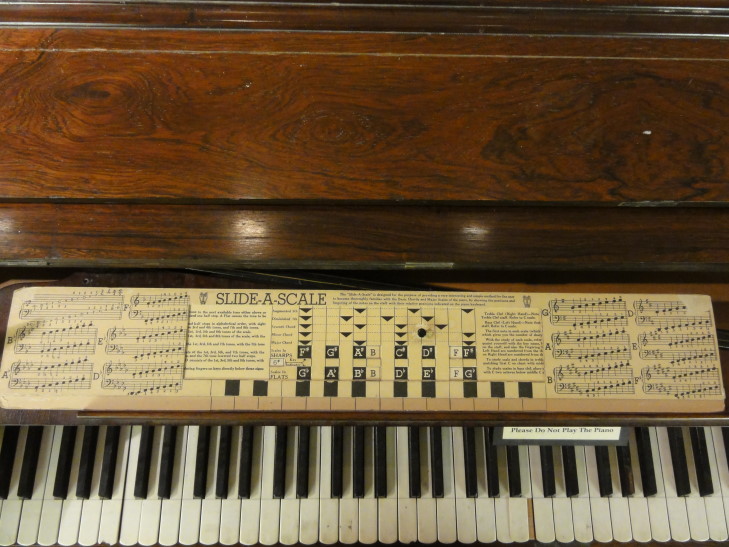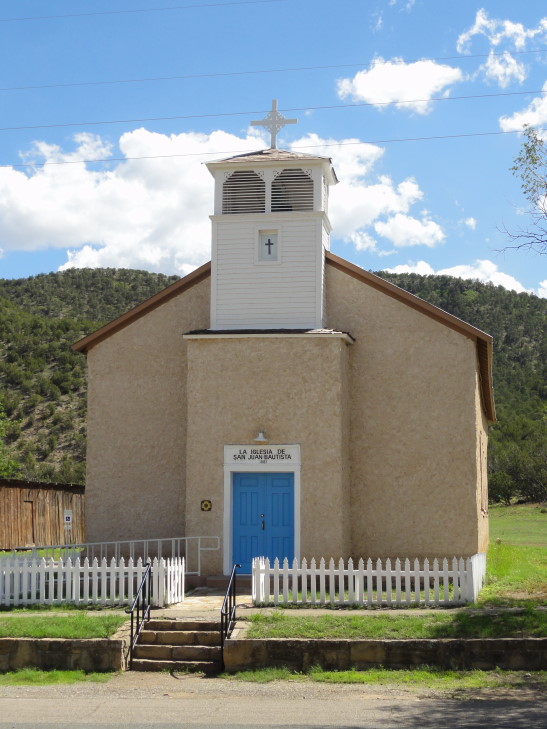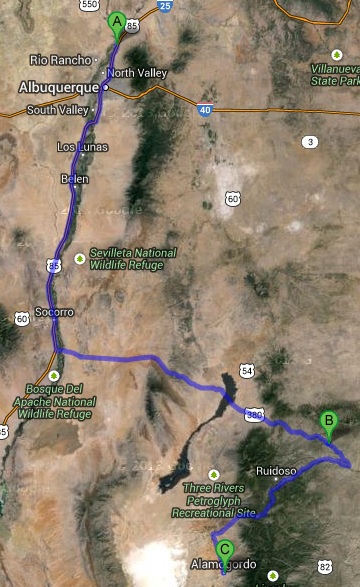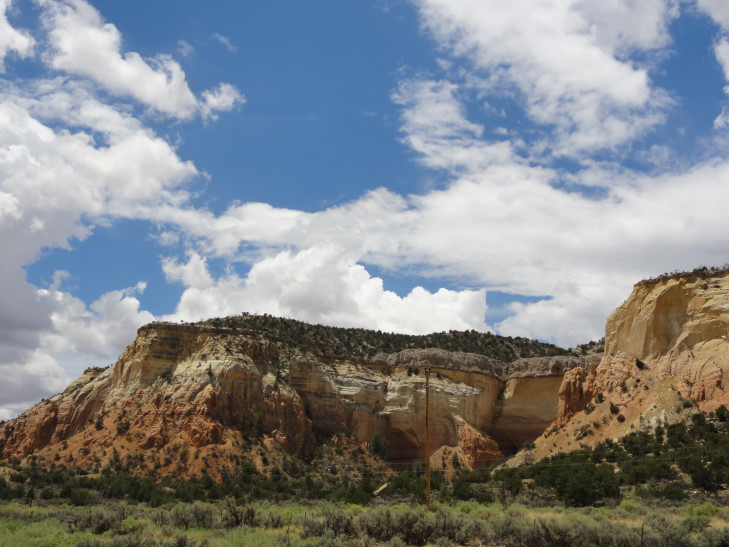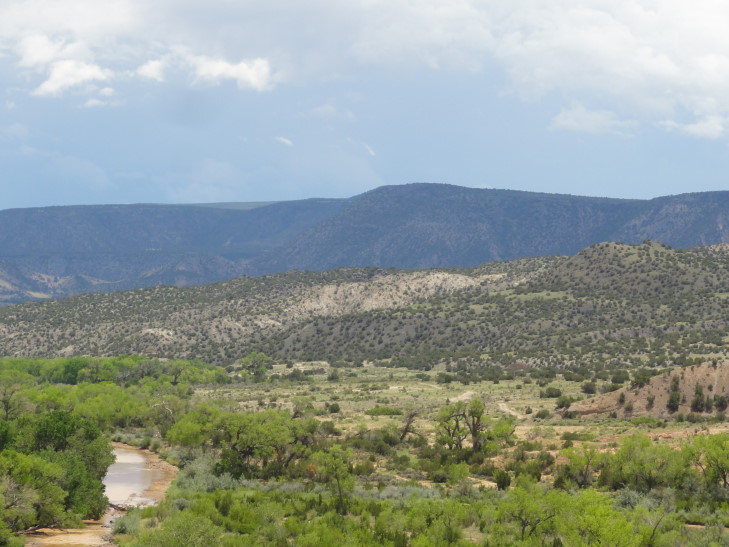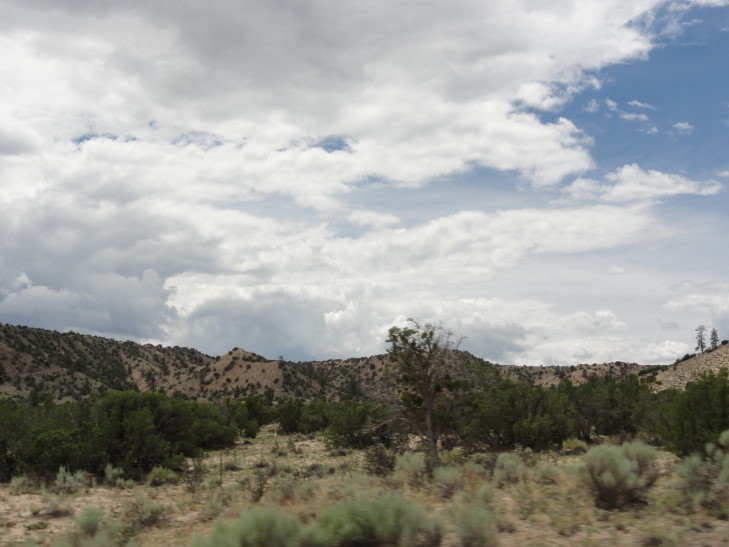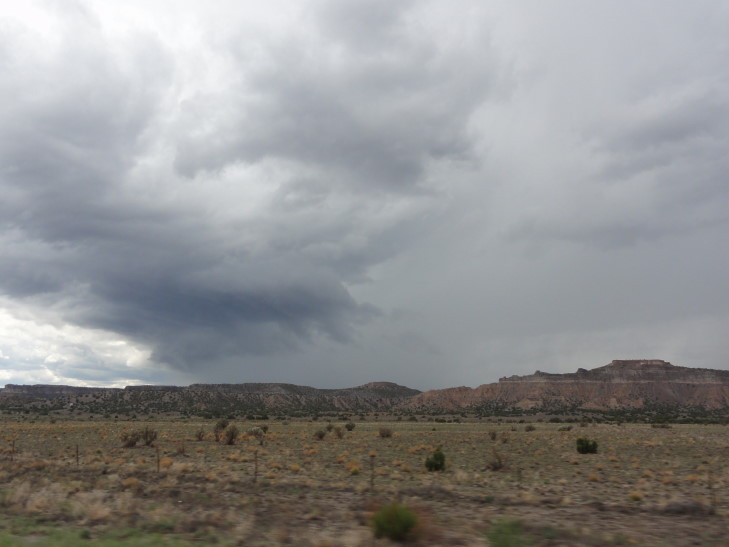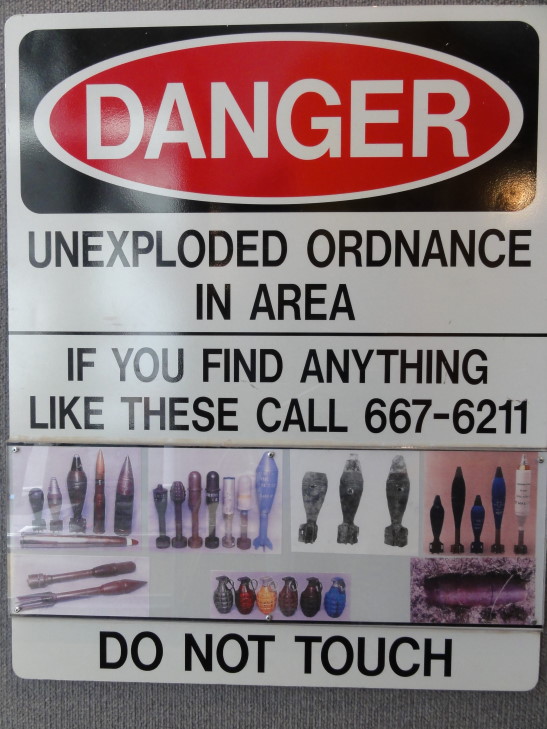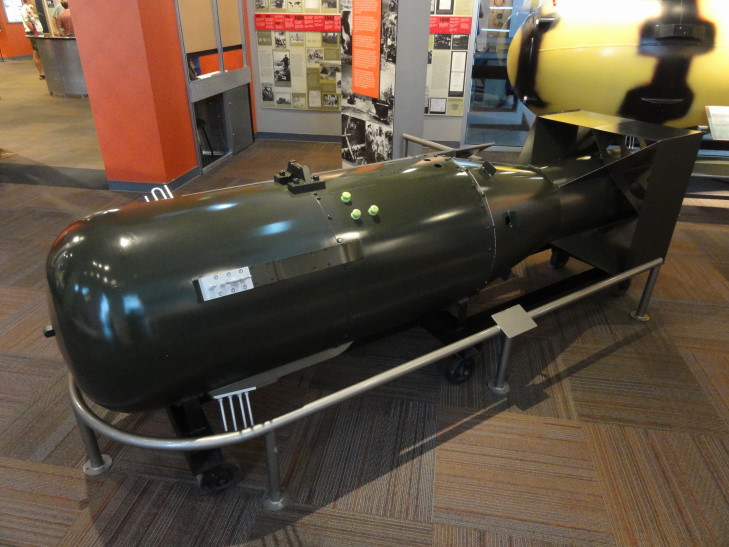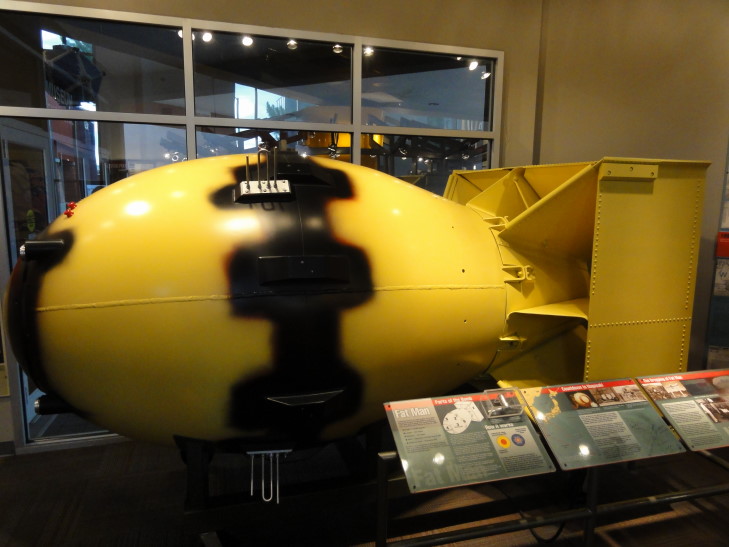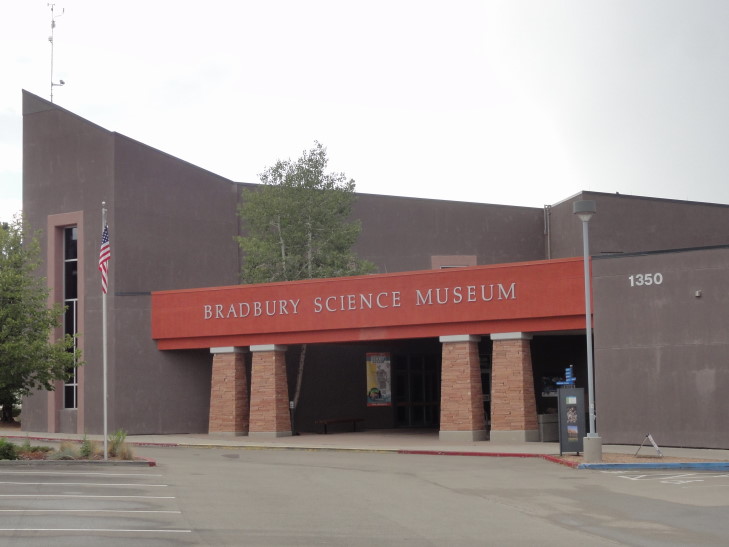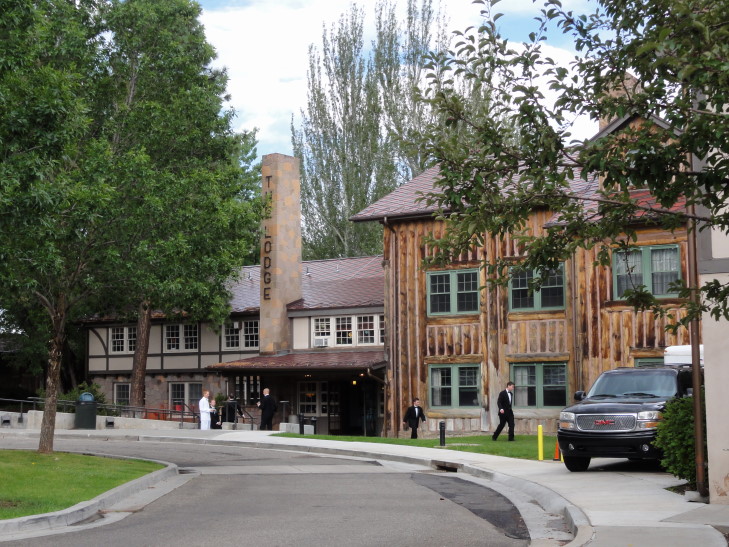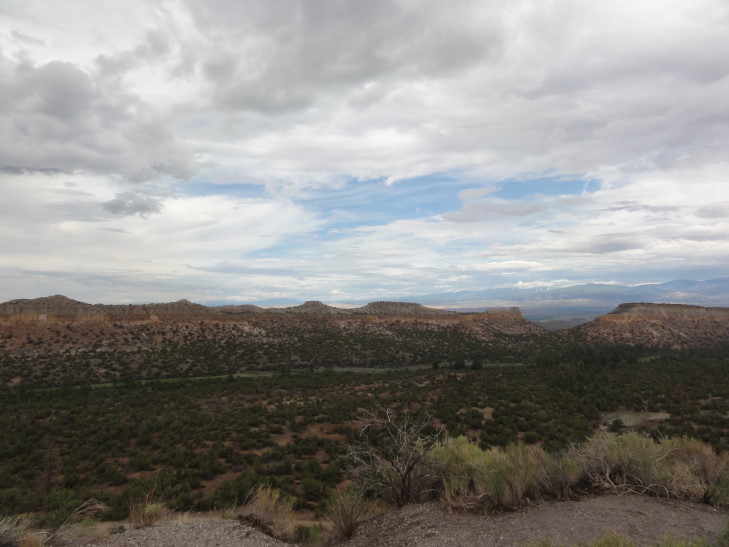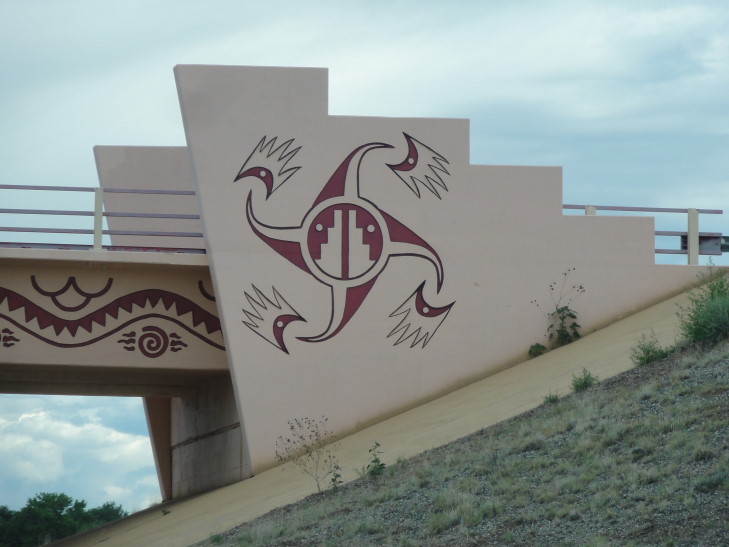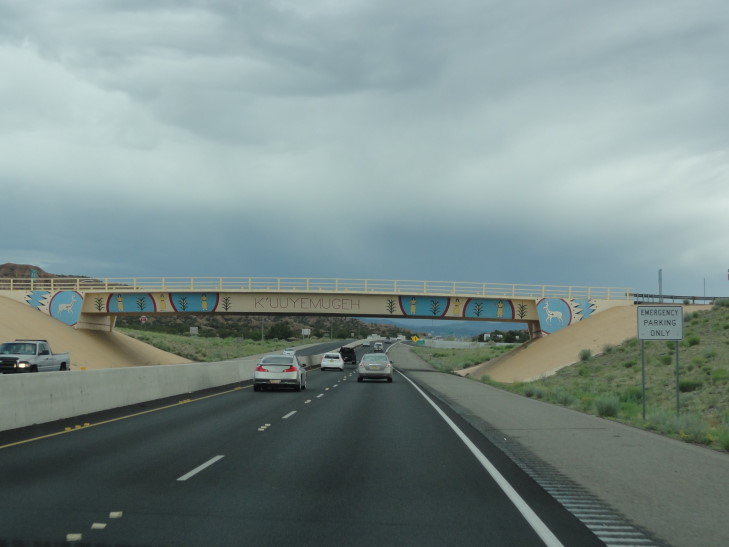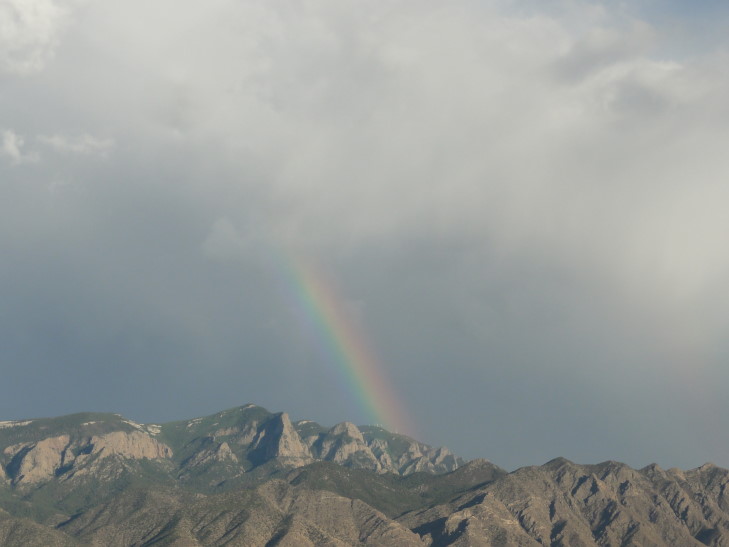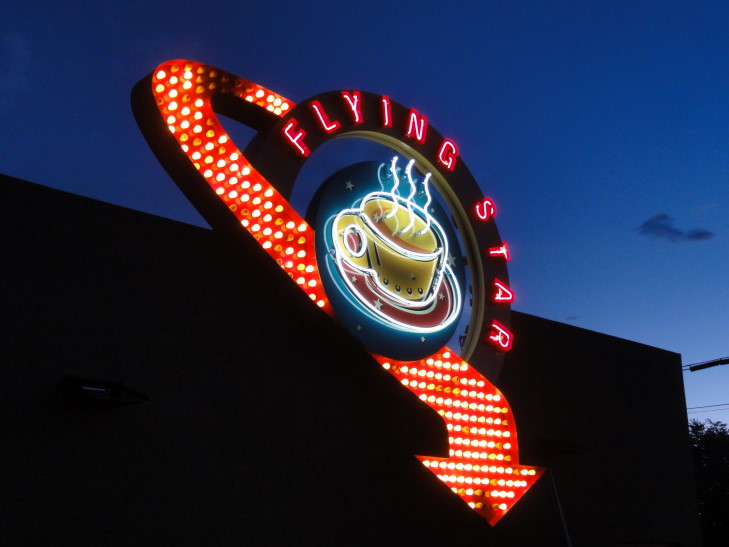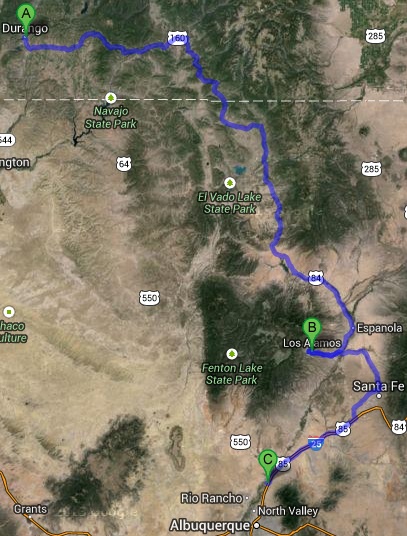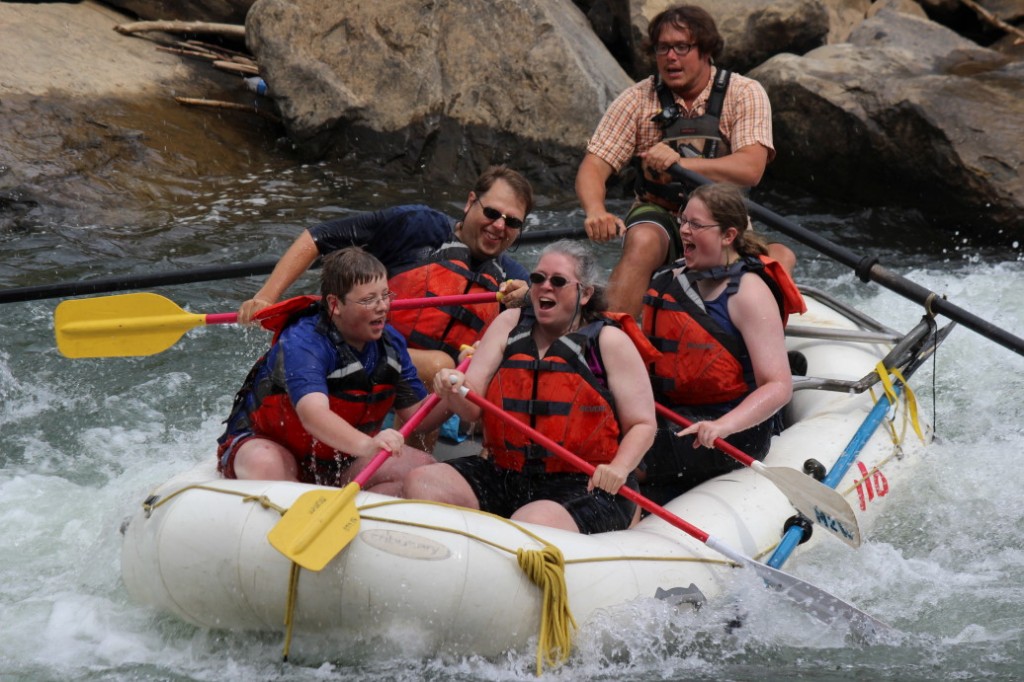Though we tried to beat the heat by getting out early we ended up arriving at White Sands National Monument, an area set aside within White Sands Missile Range for public use, about 10a. The visitor’s center had some pretty interesting displays about desert life and how the area was formed and a decent film, though the audio kept cutting out. The gift shop sold sleds for sledding on the dunes but we (and by that, I mean Addison) resisted.

White Sands National Monument visitor's center
Drove the short distance from the visitor’s center to where the dunes began. The area is a big basin, the Tolurosa, with no outflow. Much of the 10″ of rain the area gets a year ends up in lakes that evaporate during the drier months (it being a wet July, we saw standing water in the desert which was really cool). As the mountains that ring the basin are rich in gypsum from an uplifted seabed from 200 million years ago the evaporated lakes leave behind gypsum crystals. Normally these would be carried off by water and out to sea but it being a basin with no outflow, as well as there being stiff southwest winds during the winter, leads to a 275 square mile area of shifting pure white dunes.

Edge of the dunes of White Sands National Monument

Further into the dunes at White Sands National Monument, New Mexico
We drove to the furthest extent of the loop road to start as we knew that it would only get hotter as the day wore on. At that point there were large dunes, some well over 20 feet in height, of pure sparkling sand. In this area the occasional tiny grass survived but other than that nothing broke up the sand — just sand and, way off in the distance, the gray silhouette of the mountains and building thunderheads. The road at this point wasn’t paved but rather was just hard-packed sand. We passed a bulldozer keeping the road clear by pushing back some of the encroaching dunes.

White Sands National Monument dune sea

Closeup of the gypsum sand
Some people were sledding but having a rough go at it — they hadn’t bought the wax that is supposed to go on the sled (for an additional charge, of course). Met a firefighter from the missile range who asked how we liked the Explorer as he was thinking of getting one. I told him we were very happy with it, it’s a decent (if expensive) SUV that seems to be getting decent gas mileage.
Drove back towards the visitor’s center and past some funky looking picnic tables with overhangs (to protect from wind and sand) that looked like they came out of the 50’s or something. We took a short walk along an elevated boardwalk a bit closer to the edge of the dunes where more plants and animals could survive. We didn’t see much in the way of animal life — I was really hoping to see a scorpion or a tarantula or even the adorably named “Apache Pocket Mouse” — only a pale lizard with a blue tail. It’s something, I guess.

White Sands National Monument picnic table

White Sands National Monument

White Sands National Monument

White Sands National Monument
We did get to witness many varieties of plants and their survival mechanisms, however. What is surprising about White Sands is that the water table is actually very close to the surface — about 2 to 3 feet below. So many plants can thrive in the desert as they can tap the water table. The problem they face, however, is that the dunes shift — from inches a year in the established ones that have some vegetation to 30 feet a year on the newer ones — and they have to cope with being buried.

White Sands National Monument
There’s a cottonwood tree that deals with it by growing fast so that at least some of the leaves are exposed to the sun at the top. We saw instances of that — what looked to be a large bush was really just the top of a buried tree. Yucca cacti grew long stems out their top and in some cases would be 20+ feet tall from root to top though you only see a tiny bit. Problem with those, though, is that when the dune moves on there is nothing to support the tall plant and it collapses. In some cases the vegetation was enough to hold together part of the dune even when most of it moved on — leading to pedestals with vegetation on top.

White Sands National Monument, note the top of a cottonwood to the right

Elevated boardwalk over the dunes allowing viewing of the plants and (supposedly) animals

White Sands National Monument

White Sands National Monument

White Sands National Monument
By 1p it was getting blazing hot — even with sunscreen and a hat it felt like the sun was boring into my skin and even with my sunglasses I was squinting from the glare — and we decided it was time to high tail it out of there. We drove the remaining distance of route 70 through the missile range and over the mountains that form the western side of the basin.

White Sands National Monument

Yucca, White Sands National Monument

Pedestals, White Sands National Monument
Once we topped the mountains Las Cruces, New Mexico’s second largest city and named for the crosses marking the graves of settlers killed by Apaches, lay before us. Just to the east of town the mountains are gray and very jagged — I could swear it was the mountains surrounding Mordor. As this would be where we stay for the night (a miscalculation on my part, I didn’t think we’d be done with White Sands so quickly) we had plenty of time to kill. We drove around a bit looking for a BBQ place but it was gone. Michelle spotted a Chinese buffet and had been jonesing for that so we stopped. I’m normally wary of buffets but this one turned out quite tasty and was very reasonable at $7.50 a head.

"One does not simply walk into Las Cruces"
Afterwards we went to our hotel and were able to check in early. We relaxed for a few minutes then headed to the movies to watch “R. I. P. D.” Now that movie won’t win any awards or anything but, especially at matinee prices — $6.50, it was a good time. We got out around 7p and headed south towards El Paso, Texas.
Michelle and I wanted to get Texas for the kids (we both already had it) as well as check out the Franklin Mountain Star, a big star that is lit up at night. We first saw it on FX’s show “The Bridge” and had made it a goal of this trip to visit El Paso. The trip to El Paso was quick (only about 40 miles separate the two) and, upon crossing the state line we were greeted by a sign stating “Beaumont 852 miles.” We all know Texas is big, but when you see a sign like that it really drives it home. That’s nearly one third the width of the continental United States spent all in one state!
El Paso is shaped like a ‘U’, with the empty part of the ‘U’ being mountains, including Franklin Mountain. We hit the top of the left part of the ‘U’ and took a road through the mountains to the top of the right part of the ‘U’, the side that has Fort Bliss and, we hoped, decent barbeque. The road was very pretty and not too steep. We were having steady rain, however, which limited the view a bit. The mountains were devoid of trees like most of the mountains in these parts. On the other side we saw a sign warning of unexploded ordinance — adjacent Fort Bliss used the area as a range sometimes.

Danger of unexploded munitions near Fort Bliss
We located Mo’z Barbeque but the location wasn’t ideal. Parking was nonexistent, bars over the windows and doors, and in a strip mall with a tattoo parlor and pawn shop. They wanted to eat elsewhere, which made me a bit grumpy, but what can you do? I just wanted to find someplace to eat long enough that night would fall and the star would be lit. That and get off the road — Texas drivers are cuh-razy.
Drove around the bottom of the ‘U’ back to the left side and found a BBQ joint on the state line of Texas and New Mexico called, appropriately enough, State Line Barbeque. It was a bit expensive and, honestly, very average. The sauce wasn’t that great and the brisket lacked the salty crust that makes it so awesome. They did have homemade bread, though, which was tasty.
Left dinner and didn’t see the star from the parking lot so back into the car we piled. Drove back around the bottom of the ‘U’ until we saw the star and took a few pictures. We also saw the bridge to Mexico as well as Juarez across the Rio Grande (but didn’t go there) then went back around the ‘U’ again and back to our hotel room in Las Cruces by 10p. A nice day, all told!

Franklin Mountain Star, El Paso, Texas

Route for Tuesday, July 30th, 2013
